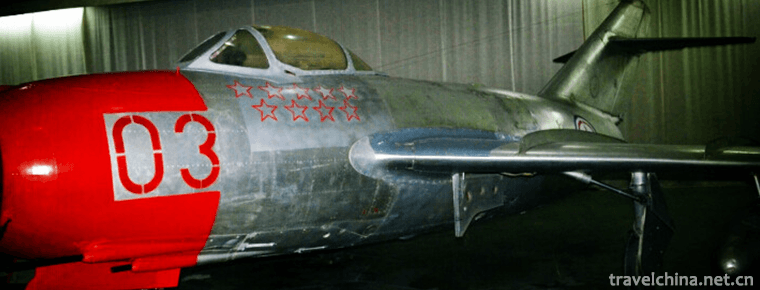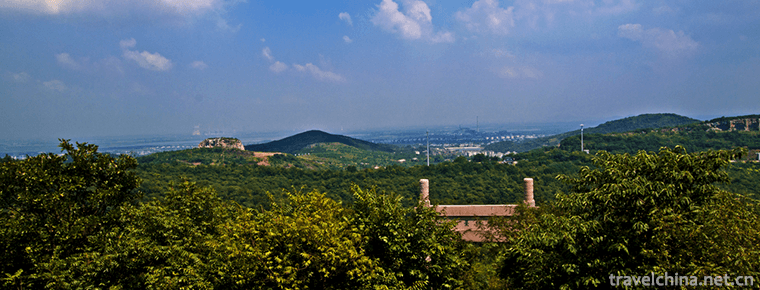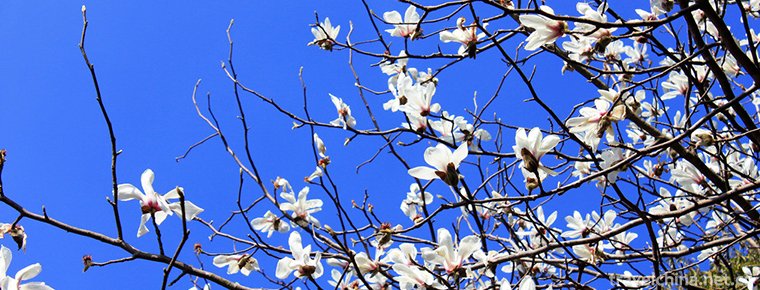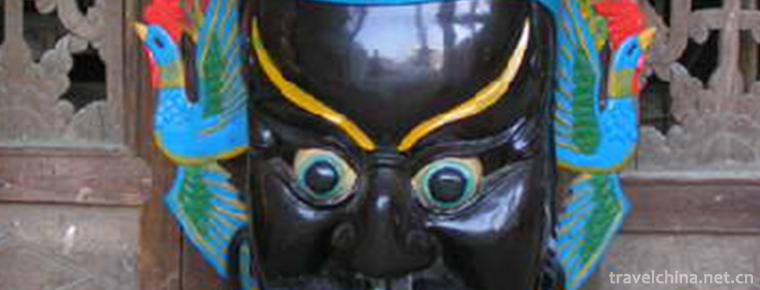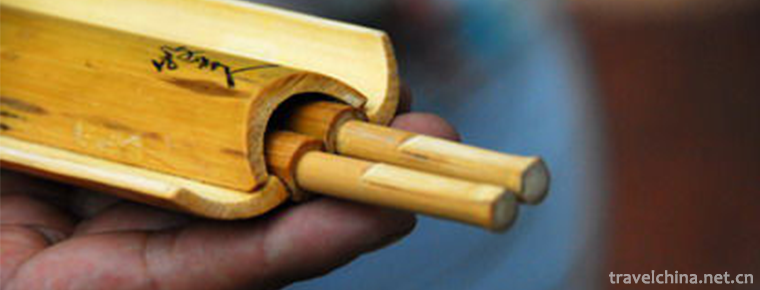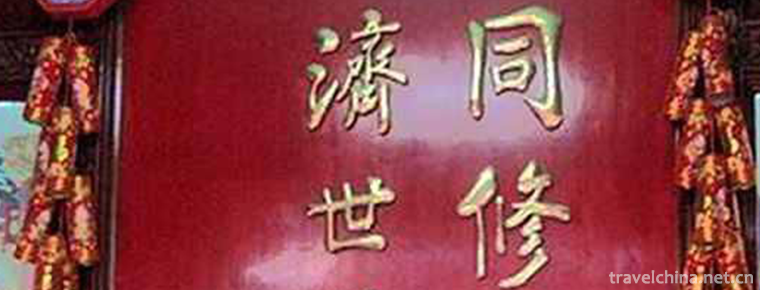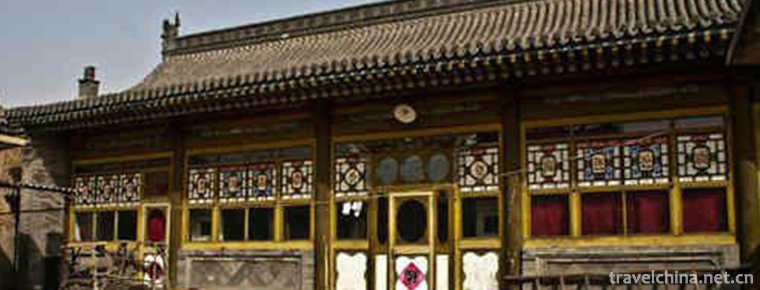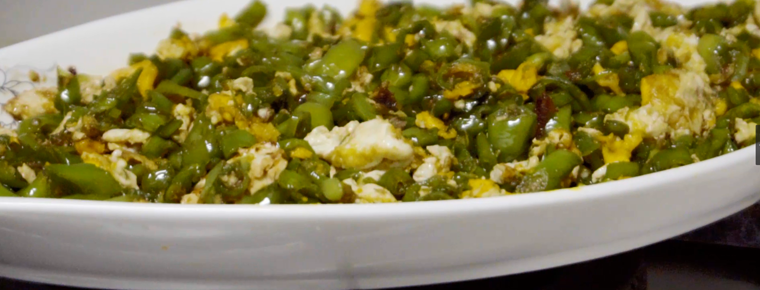Kedao
Kedao, the local traditional folk literature of Shibing County, Guizhou Province, is one of the national intangible cultural heritage.
The Miao people's "carved road" means "carved wood", which is translated into "Miao people's song of opening their families" in Chinese. It is mainly spread in a hillside depression of Feiyun Grand Canyon, Yangliutang Town, Shibing County, Guizhou Province. "Kedao" is the only carved logo symbol reserved so far among the Miao people living in China. It is by far the earliest record of facts of the Miao people and the oldest writing tool of the branch.
On May 20, 2006, Miao ancient songs were listed in the first batch of national intangible cultural heritage list with the approval of the State Council.
historical origin
According to the records of Zhenyuan Fuzhi written by Qianlong in the Qing Dynasty, the Miao people were "vulgar and without written language. They carved several inches of bamboo and wood for their intercourse, which was called"carved wood". Marriage rule "Aunt's daughter is my uncle and daughter-in-law". If you have no children, you must give them back to your uncle, which is called nephew's money. Otherwise, you can't marry or recruit teenagers for life.
"Guizhou Zhiluo" also has the record of Miao people's "carving wood to show the message, still retaining the ancient style".
Cultural characteristics
Style of Art
Carved Road is the longest, largest and most widely circulated wine song in Miao ancient songs, with more than 10,000 lines of lyrics. It was created, accumulated and evolved by the ancestors of the Miao nationality in their long-term production and life practice, during which they absorbed the essence of the excellent folk songs of other nationalities and formed the unique characteristics and style of Miao poetry. Ancient songs depict the environment, the characters'language, action, psychology and personality, vividly and vividly.
Kedao, translated into Chinese as "Miao People's Song of Opening Parents". Before the Miao people get married, both sides have to sing carvings, and if they can't sing, they have to punish alcohol. The singular symbols on the carved wood have the function of prompting, each of which corresponds to different singing contents. The inscription originated in a historical period of Miao's transition from matriarchal clan to patriarchal clan, reflecting mainly the marital status under the uncle's power system. Its language is popular, colloquial and full of flavor of life. With rich and magnificent imagination, it creates a Miao girl who dares to pursue happiness and freedom. It shows Miao people's persistent pursuit and yearning for happy marriage.
Basic composition
Kedao is called "Miao's Marriage Epic", which consists of three parts.
I. The Origin of "Kinship"
The first part of Carving Dao is about the birth of "kindred", that is, the birth of "kindred". The "pro" discussed in Carved Way is abstract in essence and refers to the marriage relationship of human beings. As an oral folk literary work, Kedao makes personified artistic treatment of this marriage relationship. The "kiss" in the carving seems to be a god, a man, and an artistic image that can be seen and touched.
Where did the "pro" come from in the opening volume of "Kedao": "In ancient times, at the beginning of the period, which is the smartest, open a field to grow grain, kill a cow to get married, all geniuses get married, everyone is happy." Then say, in ancient times, "pro" where? How to come to the world, and then the words changed, saying that "pro" lived in the eastern heap of rocks, stone nests, "pro" grew up eating "stone milk". When the "pro" grew up, the swallow first saw him, and then a man named "Yanye Jiba" and a man named "Yangjiu Gou Lao" met him. Finally, a naughty doll saw "pro". The doll was bold. "Bring a fire, a grass, and set fire to the nest of relatives." At this time, the "pro" collapsed the lintel: "pro" to run in all directions, running out of three ways: all the way to the world, for the divine world, "pro": all the way up the mountains and down the valleys, for animals and plants, "pro": all the way to the Angwo Mountains, for human "pro". From then on, the "biological" came into being, that is, the "pro".
The birth of "kinship" in the "birth" chapter implies that people are separated from the animal kingdom, so the unique marriage relationship of "kinship" was born.
2. Retrospect of Prehistoric
Marriage
In the second part of the Carving Way, divine marriage is supposed to be the marriage of gods literally. In fact, the content is rather complicated. It not only talks about the grand occasion of divine marriage such as Dragon King and Lei Gong, but also about the situation of various animals'marriage. In fact, it is a retrospect of the primitive group marriage pattern.
In the carved way, the song says, "Kinship" was born, and then went down first. Along the way, he met fish and shrimp, Dragon King and heavenly king, and so on. They invited him to open a marriage. Then, "kissing" goes to the heavens again, and is invited by the gods of the heavens, such as the God of thunder, the thunder god of the pig, the God of thunder, the God of white thunder, and so on. Finally, "pro" fell to the Angwuling Mountains of the human world, and opened relations with animals, plants and human beings.
The description of the opening of relatives between gods and animals in Kedao is full of human feelings: the song sings, "Go down the second road to the Dragon King's house and go to the Heavenly King's house: the Dragon King's family is close to the Heavenly King's house, and the Heavenly King's family is close to the elder parent. This is the second elder parent." Rainbow talks to the Wulong's family to make matchmaker. "Rainbow means to open your mouth, and reply:"I broadcast rain every day, pass you, see your girl, very beautiful. Donglong asked me to ask your daughter-in-law if she wanted to go. It is also full of human interest to write about animal bride, such as magpie "bride tree-like tips", firewood insects use "broken wood noodles" to cook: whether God or animal bride, they mostly choose auspicious days and prepare feasts, but the dishes on their banquet are different from human dishes. These contents, seemingly absurd, actually reflect the natural view of the primitive ancestors. They believe that gods, animals, plants and human beings have certain marital relationships, which enable gods, animals, plants and human beings to continue to multiply and thrive. At the same time, it also reflects that human beings were confused with animals in the early period and had very chaotic sexual relations.
3. Human's Family Song
The third part of Carved Way, which is about four fifths of the length of the whole work, is the main part of Carved Way. This part systematically narrates the origin, development and evolution of the ancient marriage system of the Miao nationality, as well as the marriage customs of the Miao nationality. This part can be divided into ten sections, which are summarized as follows:
(1) The contest between intra-clan marriage and extraclan marriage
In the section "Battle the Eagle, Except the Tiger", the carving tells about the relationship between man and animals. In ancient times, the ancestors of Miao people lived by picking and hunting, and there was an inseparable relationship between human beings and animals. Therefore, in this period of mythology, there will be the content of the marriage between man and animals. However, further investigation will reveal that the marriage between human beings and animals is only a kind of appearance. What is revealed behind this appearance is the situation of extraracial marriage? In fact, the "tiger sisters" and "monkey sisters-in-law" in the section of "Kedao" are not real animals, tigers and monkeys, but women of the tiger totem and monkey totem clan. The marriage pattern of the ancient Miao nationality is in the historical stage of transition from intra-clan marriage to extraclan marriage. At that time, with the expansion of the clan, blood relationship began to thin. In the concept of marriage, there is a struggle between intra-clan marriage and extraclan marriage. Insisting on intra-clan marriage can strengthen the desalinated blood relationship, and insisting on extraclan marriage can give marriage more space for development. Finally, the tiger sisters and monkey sisters-in-law were killed to support the idea and strength of the clan's internal branch.
(2) The emergence of consanguineous marriage and family
This part is composed of "meeting relatives in Angwoling", "describing relatives with cattle" and "narrating media". It focuses on the situation of the two brothers, Xini and Xijin, born of their mother. They "share a ancestor, make clothes with a piece of cloth and share a pot of food". The two brothers, Xini and Xijin, are eager to find "relatives" and run around "nine days and nine nights" and "failed to find relatives". In spite of all kinds of helplessness, they believed that "only by opening a family in the interior" could the problem of "relatives" be solved. The so-called "internal marriage" refers to the marriage between brothers, that is, intra-clan marriage, that is, consanguineous marriage.
Whether a brother's children can be married, whether a brother can become a relative, Hinni and Hiddin decide to listen to God's will. They asked "gallnut tree", "catalpa tree" and "rock green bar". All the trees said that they could open a marriage. They also used bamboo lunch boxes to test whether their brothers could open a marriage. The result was half meal and half wine: they thought it was God's will, and God was in favor of brothers becoming relatives. Hence, the two brothers decided to ask matchmakers to match up and kill the white buffalo to make an engagement: this section is a recount of blood marriage, but also a defense of blood marriage, indicating that it is God's will to marry relatives and children.
It should be pointed out that the section "matchmaker" obviously contains the content after the age of consanguineous marriage, such as the description of the birth and growth of matchmaker Baoxiang, the narration of Baoxiang's going to beat Juanjia's family and the description of matchmaker Baoxiang's smooth-tongued image, etc., which is obviously the content added by later singers according to the situation at that time. As a living epic of marriage. This is normal.
(3) The Elegy of Cousin's
Marriage
This part of the content, only the "forced marriage" section, tells the situation of uncle and cousin marriage.
In matriarchal clan society, aunts and uncles belong to the same clan. In such a clan, usually the elder women are in charge of the family, uncle is only an important member of the clan. With the development of social productivity, human beings enter the era of farming, men's contribution to the clan is increasing, and gradually become the pillar of the clan. Maternal clan society began to disintegrate and give way to paternal clan society. This social change is reflected in the issue of marriage, that is, a woman changes from a husband-in-law to a married man: a woman who marries a man can no longer grasp the real power of the clan.
As the inheritors of maternity, the older women are not willing to control the real power of the clan. They have to hope that the real power can be controlled by the man who is closest to them. They hope that the real power can be controlled by the man who is closest to them, in the clan towel. Zhifu is a foreigner, who has two blood dense rivers, and has no close relatives with women. Apart from the time when father and son are brothers and half a woman are going to talk about marriage and marriage for their daughters, the brothers are in their prime years. Therefore, the status of brothers and daughters'uncles in the clan towel highlights the fact that "mother's uncle" has become a major rule of the patriarchal clan society after entering the patriarchal clan society. My uncle had the supreme control of his daughter's marriage. My daughter married no one. My uncle had the final say, and became the customary law of r society. IF was the formation of this customary law, which promoted the cousins of my aunt: the daughter of my aunt married to the uncle's son.
Although Miao customary law does not forcibly stipulate that aunt's daughters must marry uncle's children, for a long time, uncle's family has absolute right to marry aunt's daughters as wives. Miao people call this phenomenon "returning the head of the mother", that is, an act of compensating the mother's family by the aunt who married at an early age. If an aunt marries her daughter to her uncle's son, she must pay a high amount of money as ransom to her uncle's family. In practice, this money is called "nephew's money". If she does not pay this money, the uncle's family will never agree with her niece to marry someone else.
In the section "forced marriages" in the carving of Tao, it is this kind of aunt-cousin marriage that is narrated.
(4) The Burden of Daughter's Marriage
This part includes three sections: "Xumu", "Carved Wood" and "Send Wood". It tells the story of my uncle who knows that his niece is going to marry someone else and carves the amount of money he asks for in wood. Then he asks his uncle to carry seven carved claws to his aunt's house and ask his aunt to pay the money in full.
(5) The End of Blood Marriage
This part of the content, including "sinking relatives in troubled times", "lowering the engagement ceremony, all the people get relatives", mainly tells about the ancient Miao people because their uncles demanded too much money and gifts, the two families failed to open a marriage, so that there was a phenomenon of robbing relatives, and finally after repeated struggles, the old marriage system has been changed, people out of the fetters of the marriage system of uncles and cousins.
In the section of "sinking relatives in troubled times", we first talk about "sinking relatives". Here, we personify "sinking relatives" once again: because uncle's family demands too much money and gifts, people can not afford to open "relatives", "sinking relatives" three times, and each "sinking" is three years. Every time "kiss" comes out and goes to get married, my uncle still asks for three hundred and two pieces of silver. Apart from the wealthy family, most people can't afford to get married, so there is a tragic situation of "troubled times". There are fewer and fewer people who have married. There is no one to blow the reed in the village, no one to play the wood leaves, no one to go to the orchestra. The two girls dare not talk about love and can only steal it in a place where nobody is. "Hum some sad songs." In the vast villages, "nine thousand old descendants, nine thousand old girls", "no clapping, no loud whistling", "thirty girls waiting to marry" and "forty young men waiting to marry" have become common phenomena. For a long time, the old girl in the village lost her youth and still waited painfully for her marriage. The old man in the village was wrinkled and still had the dream of marrying a wife in his heart. Girls become old ladies, boys become old masters, one by one "humming miserably", "haggard as charcoal": uncles and cousins have brought people a serious disaster, forcing young men and women who yearn for freedom of love and freedom of marriage to launch a fierce resistance to uncle power.
Inheritance mode
Static-Wood Cutting
The carving is mostly made of maple, pear or bamboo, as well as ivory and ox bones. The legendary "Carved Way" is very bulky and bulky. Only seven or eight strong men can lift it later. In order to carry it easily, the smaller the "Carved Way" becomes. Nowadays, there is no strict regulation on the shape of the carved Tao. The length, thickness and force circle of the carved Tao are all acceptable. The carved Tao is as long as a bamboo flute and as short as a handle. It can be put into a pocket. In addition to the handle, there are nine sections with mysterious symbols engraved on three sides and a total of 21 formats. The strokes of mysterious symbols are mainly horizontal, fork and angle, such as "one", "=", ";","""Delta", "X", "Shang", "X". They are the rudiments of characters that can be seen, touched and spoken for recording and describing Yuqing. They are the only oldest surviving woodcut Memorial symbols of Miao nationality and one of the remains of the rudiments of characters before the formation of Chinese square characters.
Some scholars believe that the ancient Miao characters were born before the Oracle Bone Inscriptions: the oldest Miao characters existed as early as the Three Miao Period before Yao and Shun. Legend has it that Chiyou, the ancestor of the Miao nationality, created a script. He carved the script on bamboo slices and wore it in a series, similar to the later bamboo slips, called Chishu and Shushu. Later, because of the continuous expropriation of Miao people by the Central Plains dynasties, the Miao people were often forced to flee and migrate. The original Miao characters could not be inherited and developed, and gradually disappeared. The symbols in The Road of Carving may be the relics of this mysterious ancient Miao script. Today, the Miao people mainly distribute in southeastern Guizhou, western Hunan, western Hubei, Damiao Mountain in Guangxi, Wuzhishan in Hainan, Wenshan in Yunnan and other places. In addition to some Miao people living in southeastern Guizhou, in other Miao people living areas, the ancient symbol of the Diao has long disappeared. Carved Road is mainly spread in Miao villages in Shibing County, Chengguan, Ganxi, Yangliutang, Shuangjing and other townships.
It is an illusion that some people interpret the mysterious symbols on the carved road as the catalogue or serial number of Kai Zi Ge. The symbols of "Kedao" seem simple, but their contents are quite complicated: they are different from the story symbols in the general sense: every symbol in "Kedao" is either pictographic, ideographic or instructional, a small part of the symbols express "words", most of which express "sentences" and "segments", and a symbol often represents 20 lines or even 450 lines of lyrics. For laymen, the symbols in the book are identical in form and cannot be recognized. In Shibing County, there is a saying that "the official family knows ninety-nine words, and no one knows the inscription thoroughly". For a singer, the symbols on the carved road are broad and profound words. A skilled singer can touch the symbols on the carved road, sing more than 10,000 lines of the carved road from beginning to end, or sing from end to end. He can also touch a symbol and sing dozens of songs.
In the past, the symbols in the book were also used to record things. Different symbols represented gold, silver, meat, rice, chicken, duck, cow, horse, mule, wine, cloth, clothing and their numbers.
Dynamics - Singers
If Carved Way is a song book, the singer is the heir of Carved Way. Miao nationality is a people who can sing and dance well. In Shibing area, when a woman marries and a man marries, he asks a singer to sing The Road to the Miao people. In some festivals of the Miao people, when they are idle, they gather together and ask the singer to sing The Road to the Miao people.
Forms of expression
Marking is a necessary thing for Miao singers. Its shape is not prescribed. It is convenient to carry. However, except for the handle, it is divided into nine small grids, with three carved characters, a total of 27 sections. Wood carving symbols are not complicated. The strokes are mainly horizontal and vertical forks, but the upper and lower symbols in each grid can not be inverted. Otherwise, they will be confused, resulting in questions and answers. At the same time, there is no special distinction between symbols, which depends on what they are inscribed.
The carved song is sung when a daughter-in-law, a girl or a girl returns to her mother's home, and also when a few villages build houses and houses. When singing, each guest and host chooses a singer, one person is the main one, ask and answer questions. Its singing methods can be roughly divided into three types: first, from the front flat track, straight up, that is, from one to nine, then from the side to nine to the inclined one to nine; the other is to sing the flat track first, and then from the side to the inclined side, each one sings the front, then from the side to the inclined side, after singing one to the next - grid, and so on, up to the ninth grid, and then back to back in turn from the ninth grid; The three singing methods are contrary to the second one, that is, from the ninth to the reverse. This kind of singing method is more difficult. When some singers pass on songs, they use this kind of singing method to strengthen the memory of novices. Only after they leave the teacher, they can sing along with each other, and they can answer with ease and fluency.
The general singing method of the inscription is to answer six times in three directions, namely six songs. What shape is the engraving? What side is the engraving? What content is the engraving? A total of 168 songs need to be sung, each song has no fixed number of lines, short questions and long answers. If the average number of lines per song is 12, it will be 2016 lines. When singing, it often starts from "opening up relatives and talking about ancient times", and singers'impromptu interrogation, which brings about side-effects. Therefore, there is the saying that "seven days and seven nights can not be finished, and there are ten thousand lines to say less".
Inheritance and protection
Inheritance significance
The Miao People's Opening-up Song, or Kedao, originated in a period of history after the Miao Maternal Clan transited to the Paternal Clan. Although there are some contents about ethnic migration and totem worship, it is different from those ancient lyrics and myths which reflect the creation, creation of heaven and earth, and the origin of human beings. It mainly reflects the marital status under the uncle system. It is called "the oldest living fossil of Miao marriage" by ethnologists and folklorists. It has very important value in the study of Miao's development history.
Carved Road is a long Miao marriage narrative poem with strong national flavor. It is also a large-scale and long-standing Miao ancient book. It has not only made great achievements in literature and art, but also has important value in the study of the origin and migration of Miao, totem worship, mathematical knowledge and linguistics.
"Kedao" is an epic handed down from mouth to mouth with rich content. It has important research value in anthropology, sociology, literature, history, ethnology, folklore, linguistics and ancient philology, especially in the study of the ancient Miao marriage adeptness system and modern Miao marriage customs.
Reflections of Ancient Chaotic Marriage and Miscellaneous Marriage
In the first two parts of the book, it tells about the birth of "kinship" and the opening of kinship with the divine world. From the present point of view, the content is very absurd, and myths and legends are the shadow of history. In fact, the absurd phenomenon of marriageable skillful described in The Sculpture is the shadow of ancient human marriage. Engels said in The Origin of Family, Private Ownership and State that the earliest marriage reflected "a disorderly sexual relationship adapted to the transition from animal state to human state". At that time, people lived with animals and animals, and there were disorderly sexual relations between people and between people and animals. Therefore, there was the unique concept of "kinship" in legend. Sometimes, it was the absurd phenomenon of "kinship" with God, sometimes with people, sometimes with animals, sometimes even with plants.
2. Reflections on the Transition from Intra-clan Marriage to Extra-clan Marriage
The transition from intra-clan marriage to extra-clan marriage is a major change in human marriage system, and also an important symbol of the development of human society from low-level women to high-level women. In the section of "Battle Hawk, Except Tigers", Kedao vividly reflects the transition from intra-clan marriage to extra-clan marriage in the song "Tiger Sister", "Monkey Sister" and "Tiger Sister". They should be the women of another clan. The "tiger" and "monkey" here are not real animals, but the totem of clan; they are not related to "tiger" and "monkey", nor to people and animals, but to animals. Is one clan related to another clan? From this point of view, it is not unreasonable to refer to the Diao as the "living fossil" of the ancient marriage of the Miao people.
3. Memories of consanguineous marriage
According to Marx, consanguineous family is the first form of social organization of human beings. The emergence of consanguineous marriage is also the result of human progress. In matrilineal clan society, consanguineous marriage is the main link to maintain the clan. In matrilineal clan society, sibling marriage is the most normal and reasonable thing. In the carving of the road, three sections are used to narrate the marriage of consanguinity: meeting relatives in Angwoling, narrating the relatives of cattle and narrating the media. In the specific narrative, the Canadian people used a lot of Heaven's will to verify the rationality of consanguineous marriage. These contents are clearly the views of future generations. It can be seen from this that the formation of the marriage epic of "Kedao" is a matter after the matriarchal clan society. At the time of the formation of Kedao, consanguineous marriage still remained in people's ideology. However, people's ideology has changed fundamentally, which has completely subverted the general view of matriarchal clan society on consanguineous marriage skill. This part of the content is not only an important material to study the ancient Miao blood marriage, but also an important material to study the formation time of the marriage epic of "Kedao".
IV. Disclosure of Cousin's Marriage
The most part of Carved Dao reflects the marriage of uncles and cousins. It should be said that this marriage history is the closest and most unfortunate one. Therefore, Kedao is full of exposing and criticizing the marriage system of uncles and cousins. This part of the content is also the most historical value, ideological value and artistic value of the content. On the one hand, the work vividly shows the struggle process of Miao women's liberation; on the other hand, it systematically exposes the harm of the marriage system of uncles and cousins, and traces the development and evolution of the marriage system of Miao uncles and cousins. These contents are of great positive significance in promoting the progress of Miao society.
In a word, Kedao systematically narrates the origin, development and evolution of ancient Miao marriage system. It can be seen as a visualized history of Miao marriage development, which is of great value to the study of the development history of Miao society. Of course, the value of Kedao goes far beyond that. The description of totem worship in The Sculpture is very helpful for people to understand the ancient totem worship, and the artistic expression of the Sculpture, such as the description of environment, character language, psychology and personality, also has important literary value.
Inheriting characters
Shi Guangming, male, was born on June 1, 1941. Wang Anjiang was selected as the representative successor of the first batch of national intangible cultural heritage projects and declared by Shibing County, Guizhou Province. Project Name: Kedao.
Wu Zhiguang, male, was born in September 1946. Wu Zhiguang was selected as the representative successor of the first batch of national intangible cultural heritage projects and declared by Shibing County, Guizhou Province. Project Name: Kedao.
Wu Tongxian, male, on December 28, 2017, was selected as the representative successor of the fifth batch of national intangible cultural heritage representative projects and declared by Shibing County, Guizhou Province. Project Name: Kedao.
protective measures
In August 2011, Pan Jiaxiang's Private Miao Culture Museum opened. The Museum mainly exhibits the culture of the Miao people's carving. At the same time, it shows the textile beds, sleeping mats, shuttlecocks, bonnets, dustpans and knives used by the Miao people to reflect the Miao people's history, culture, production and life, as well as their ancestral etiquette.
social influence
On February 11, 2012, Yangliutang Town of Shibing County held the Miao Bartholomew Festival and the 3rd "Cutting" Cultural Festival. The "Cutting" Culture was displayed at the Cultural Festival.
From September 28 to October 7, 2014, the first Shibing Karst World Natural Heritage Ecotourism Festival opened in the World Natural Heritage Site, Shibing Yuntai Mountain, and the "carving" culture was displayed at the tourism festival.







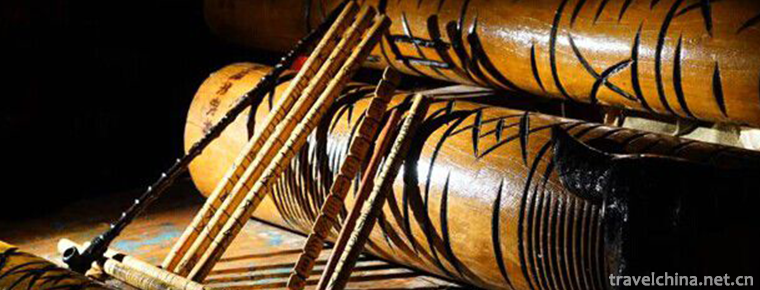
-
WeChat
WeChat is a free application that Tencent launched on January 21, 2011 to provide instant messaging services for intelligent terminals.
Views: 173 Time 2018-11-13 -
Yunya Temple Scenic Area
Yunya Temple Scenic Area is a comprehensive scenic area, which is represented by the unique Danxia landform on the Loess Plateau, and is composed of abundant forest resources.
Views: 137 Time 2018-12-22 -
China Aviation Museum
China Aviation Museum is the first large-scale open aviation museum in China. It is located at the foot of Datangshan, Changping District, Beijing. After many years of closure.
Views: 157 Time 2018-12-22 -
Bagong Mountain Tourist Scenic Area
Since 2001, Bagongshan Scenic Area has listed Bagongshan National Geopark, Bagongshan National Forest Park and Bagongshan National AAAA Tourist Area successively. Bagong Mountain is a famous historica.
Views: 139 Time 2018-12-23 -
Haitangshan Scenic Area
Haitangshan Mountain is one of the top ten scenic spots in AAAAAA, National Forest Park, National Nature Reserve, Provincial Key Cultural Relics Protection Unit and Province.
Views: 147 Time 2019-01-13 -
Pingxiang Xiangdong Nuo Mask
Nuo mask is an important part of Nuo culture. It is used in Nuo etiquette, Nuo dance and Nuo opera. Nuo mask in eastern Hunan is an excellent traditional Chinese sculpture with a long history. Eastern.
Views: 167 Time 2019-06-09 -
Performing and Making Skills of Qiang Flute
Qiang flute is an ancient single-reed gas singing instrument in China. It has a history of more than 2000 years. It is popular in the Qiang people's residence of Aba Tibetan Autonomous.
Views: 159 Time 2019-06-10 -
Tongrentang Traditional Chinese Medicine Culture
Tongrentang Traditional Chinese Medicine Culture, one of the traditional Chinese medicine, is declared by Beijing Tongrentang (Group) Co., Ltd., one of the national intangible cultural heritage..
Views: 189 Time 2019-06-21 -
Construction Techniques of Yanmen Folk House
Yanmen folk house construction technology is a traditional skill with local characteristics in Xinzhou, Shanxi Province. It was listed in the third batch of intangible cultural heritage list in 2011. .
Views: 129 Time 2019-07-10 -
Scrambled eggs with green peppers
Fried eggs with green peppers is a family dish. The main ingredients are eggs and green peppers. The auxiliary ingredients are lard, salt, vinegar, onion, etc. the main cooking technology is fried, ye.
Views: 432 Time 2020-04-10 -
Chuanxindian earthquake site
Compared with Beichuan earthquake site, Yingxiu earthquake site and Hanwang town earthquake site, chuanxindian earthquake site in Shifang has unique advantages. It can fully reflect the great spirit of earthquake relief and has great protection and construction value..
Views: 101 Time 2020-11-05 -
Zhaohua ancient city
Zhaohua ancient city is located in Zhaohua Town, Zhaohua District, Guangyuan City, Sichuan Province. After that, Zhaochang county was renamed as Yichang county. Located at the confluence of Bailong River, Jialing River and Qingjiang River, the Jialing River flows here with Wancheng water system and natural Taiji. It has the reputation of "the world's first landscape Taiji" natural wonder..
Views: 128 Time 2020-11-08


